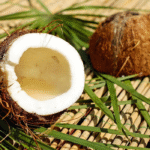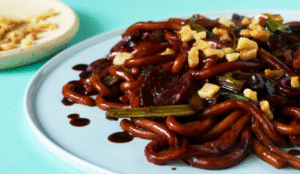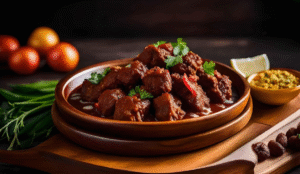Malaysia Fried Rice: Dish With Unique Local Variations
When you think about Malaysia, the first images that come to mind are often its colorful culture, buzzing night markets, and aromatic food stalls that spill out into the streets. While dishes like nasi lemak or satay tend to steal the limelight, there’s one humble yet endlessly adaptable dish that deserves just as much love Malaysia fried rice. It’s the kind of meal that speaks to both simplicity and creativity, a dish rooted in tradition but constantly evolving with local influences.
From bustling mamak stalls in Kuala Lumpur to hawker centers in Penang and family kitchens in rural kampungs, fried rice is everywhere. But what makes it so uniquely Malaysian? It’s not just the rice itself—it’s the local spices, sauces, cooking methods, and the way every community has molded it to fit their taste. Whether cooked in a fiery wok over high heat or prepared gently with fresh herbs and kampung vegetables, Malaysia fried rice carries the country’s soul in every spoonful.
This guide takes you on a flavorful journey across the many variations of Malaysia fried rice, diving into its cultural roots, regional differences, and even modern twists. By the end, you’ll not only crave a steaming plate but also understand how fried rice here represents the essence of Malaysia itself.
Frequently Asked Questions (FAQ)
1. What is the name of the fried rice in Malaysia?
In Malaysia, the most famous fried rice is called Nasi Goreng, which literally means “fried rice” in Malay. It’s a beloved street food dish, often cooked with soy sauce, garlic, chili, and topped with a fried egg.
2. What is Malaysian rice called?
Rice in Malaysia is generally called “nasi”. It’s the staple food of the country and appears in many traditional dishes such as nasi lemak, nasi goreng, and nasi kandar.
3. What is fried rice in Malay language?
In Malay, fried rice is called “Nasi Goreng” (nasi = rice, goreng = fried). It’s a simple but flavorful dish enjoyed at home, in restaurants, and at street stalls.
4. Why is it called Sinangag?
Sinangag is the Filipino version of garlic fried rice. The name comes from the Tagalog word “sangag”, which means “to sauté” or “to fry.” Unlike Malaysian nasi goreng, sinangag is usually plain and garlicky, served as a side dish with meats or eggs.
5. What is another name for fried rice?
Depending on the country, fried rice goes by different names. In Malaysia and Indonesia it’s nasi goreng, in Thailand it’s khao pad, in China it’s often just chǎofàn, and in the Philippines it’s sinangag. All share the same idea—rice stir-fried with tasty ingredients.
The Origins of Fried Rice in Malaysia
Before we dive into the types of fried rice in Malaysia, it’s worth looking back at where it all began. Fried rice as a dish can be traced back to China, where leftover rice was stir-fried with soy sauce, eggs, and bits of meat or vegetables. When Chinese traders and migrants settled in Southeast Asia, they brought their culinary traditions with them.
But in Malaysia, something special happened. This dish didn’t remain Chinese—it fused with Malay flavors, Indian spices, and local ingredients. The soy sauce base got spiced up with sambal, belacan (shrimp paste), and chili padi. Eggs were replaced or enhanced with ikan bilis (anchovies). Even curry powder found its way into the wok, giving the dish a fiery aroma that made it distinctly Malaysian.
The result? A uniquely Malaysia fried rice that reflects the country’s history of migration, trade, and cultural blending.
Why Fried Rice Became a Malaysian Favorite
There are plenty of reasons why fried rice is beloved across Malaysia. For one, it’s a quick fix—something you can cook in under 15 minutes if you have leftover rice sitting in the fridge. It’s also affordable, making it a go-to meal for university students, busy workers, and families alike.
But more than convenience, Malaysia fried rice thrives because of its adaptability. It can be dressed up with seafood like prawns and squid or kept humble with just soy sauce and egg. Street vendors often elevate it with smoky wok hei (the “breath of the wok”), while home cooks play around with family recipes passed down through generations.
Above all, fried rice reflects the Malaysian spirit: resourceful, flavorful, and welcoming of influences from everywhere.
The Classic: Nasi Goreng Kampung
Perhaps the most iconic version of Malaysia fried rice is nasi goreng kampung (village-style fried rice). This dish celebrates rustic flavors with simple yet punchy ingredients.
A typical plate includes:
- Rice stir-fried with sambal belacan (spicy shrimp paste).
- Small dried anchovies (ikan bilis) fried until crispy.
- Kangkung (water spinach) for a touch of freshness.
- Bird’s eye chilies for heat.
The beauty of nasi goreng kampung lies in its bold flavors. It’s spicy, aromatic, and deeply satisfying. This is the kind of Malaysia fried rice that instantly connects Malaysians to their roots, evoking memories of family meals in rural kampungs.
Seafood Delight: Nasi Goreng Udang & Sotong
Given Malaysia’s rich coastlines, it’s no surprise that seafood makes its way into Malaysia fried rice. Nasi goreng udang (prawn fried rice) and nasi goreng sotong (squid fried rice) are staples at seaside stalls and seafood restaurants.
The sweetness of prawns or the chewiness of squid pairs beautifully with smoky fried rice. Add in a squeeze of calamansi lime and you’ve got a dish that balances savory, spicy, and tangy flavors all in one. For many, this seafood variation represents the ultimate indulgence when it comes to Malaysia fried rice.
A Taste of India: Nasi Goreng Mamak
One of the most beloved types of fried rice in Malaysia is nasi goreng mamak. Inspired by Indian Muslim cooks at Malaysia’s famous mamak stalls, this version is vibrant and spicy, often cooked with curry powder or chili paste.
It’s usually served with:
- A side of fried chicken or lamb.
- A dollop of spicy sambal.
- Sometimes even topped with a fried egg for extra richness.
What sets this apart is the depth of flavor—smoky, spicy, and slightly tangy, reflecting Indian culinary traditions woven into Malaysia’s food scene.
Chinese Roots: Nasi Goreng Cina
On the opposite end of the flavor spectrum lies nasi goreng cina (Chinese-style fried rice). This variation is lighter and less spicy, usually seasoned simply with soy sauce, garlic, and egg. It often includes peas, carrots, and small prawns.
This dish reflects Malaysia’s Chinese community and is particularly popular among families who prefer milder flavors. Despite its simplicity, it’s comforting, clean-tasting, and endlessly versatile.
Special Creations: Nasi Goreng USA & Pattaya
Malaysians have a knack for taking a simple concept and making it extravagant. Enter nasi goreng USA—a quirky name for Malaysia fried rice dish topped with fried chicken, beef, or seafood, plus a generous drizzle of spicy sauce. The “USA” doesn’t really stand for the United States, but locals love the playful touch.
Then there’s nasi goreng pattaya, where fried rice is wrapped in a thin omelet, resembling a parcel. It’s usually served with chili sauce on top, creating a fun and filling dish that appeals to kids and adults alike.
These special creations show just how playful Malaysia fried rice can be, blending influences with a dash of local creativity.
The Role of Sambal and Sauces
No discussion of Malaysia fried rice is complete without talking about sambal. This chili-based condiment is the heart of many local fried rice variations. Whether it’s sambal belacan, sambal ikan bilis, or a simple chili paste, sambal transforms fried rice from ordinary to extraordinary.
Equally important are sauces like kicap manis (sweet soy sauce), oyster sauce, and fish sauce. Each adds a distinct layer of flavor, shaping the character of the dish.
Street Food Culture and Fried Rice
Fried rice isn’t just a home-cooked meal—it’s also a staple of Malaysia’s street food culture. In cities like Kuala Lumpur and Penang, you’ll see stalls with giant woks, flames leaping high as cooks toss rice with lightning-fast movements. That smoky aroma of wok hei is what makes street-style fried rice irresistible.
Sitting at a mamak stall late at night, sharing a plate of Malaysia fried rice with friends, is a quintessential Malaysian experience. It’s not just about the food—it’s about the atmosphere, the laughter, and the sense of community.
Modern Twists on Malaysia Fried Rice
While traditional versions remain popular, younger generations and creative chefs are experimenting with bold twists. Some modern takes include:
- Cheese fried rice – adding melted cheese for a creamy texture.
- Salted egg fried rice – rich and savory, with a distinct umami flavor.
- Fusion versions – blending Japanese teriyaki, Korean kimchi, or even Middle Eastern spices.
These new styles prove that Malaysia fried rice isn’t stuck in the past. It’s a living, evolving dish that adapts to new tastes while staying true to its roots.
Fried Rice as a Cultural Symbol
At its core, Malaysia fried rice is more than just a meal. It’s a reflection of the country’s multicultural identity. Every variation tells a story—whether it’s the kampung-style rice that connects Malaysians to rural traditions, the mamak version that symbolizes Indian Muslim contributions, or the Chinese-style rice that highlights another important community.
Eating fried rice in Malaysia is a journey through history, culture, and shared experiences.
Tips for Making Authentic Malaysia Fried Rice at Home
If you’re inspired to recreate these flavors, here are a few tips:
- Use day-old rice – freshly cooked rice is too soft and sticky; leftover rice gives the best texture.
- Cook over high heat – the wok hei effect is essential for authentic taste.
- Don’t skimp on sambal – it’s the soul of Malaysian flavor.
- Experiment with proteins – from anchovies to prawns, variety is key.
- Garnish generously – cucumber slices, fried egg, or keropok (crackers) add the finishing touch.
By following these steps, you’ll capture the essence of Malaysia fried rice right in your own kitchen.
Conclusion: A Dish That Brings People Together
From its Chinese origins to its Malay, Indian, and fusion variations, fried rice in Malaysia is more than just food. It’s a culinary canvas where cultures meet, flavors blend, and traditions thrive. Whether you’re enjoying nasi goreng kampung by the beach, nasi goreng mamak at a bustling night stall, or experimenting with modern twists at home, each plate carries a story.
So the next time you tuck into a plate of Malaysia fried rice, remember: you’re not just eating a simple dish. You’re tasting the spirit of Malaysia itself—diverse, flavorful, and endlessly creative.





